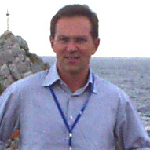-
Publication Date:
01/02/2002
on Molecular reproduction and development
by Chieffi P, Colucci D'Amato L, Guarino F, Salvatore G, Angelini F
DOI: 10.1002/mrd.1151
There are always more evidences indicating that 17beta-estradiol (E(2)) is necessary for normal male fertility. We have used a nonmammalian vertebrate model (the lizard Podarcis s. sicula) to investigate the regulation of extracellular signal-regulated kinase 1 and 2 (ERK1/2) activity in the testis during the annual sexual cycle and to study whether E(2) exerts a role in the spermatogenesis through ERK1/2 activity. Immunocytochemistry analysis shows that ERK1/2 proteins are present in the nucleus of the spermatogonia (SPG), and in primary (I) spermatocytes (SPC). The annual E(2) profile shows a progressive increase during the active spermatogenesis (from April to June) and a peak in the month of August (spermatogonial mitosis). In parallel, ERK1/2 (molecular weight 44 and 42 kDa, respectively) are highly phosphorylated during the period of active spermatogenesis and in post-refractory period (August) compared with the winter stasis (from November to March). Present results demonstrate that E(2) treatment induces spermatogonial proliferation, possibly via the activation of ERK1/2, and this effect is counteracted by the antiestrogen ICI 182-780.
-
Publication Date:
01/03/2000
on Cancer research
by Le Hir H, Colucci-D'Amato LG, Charlet-Berguerand N, Plouin PF, Bertagna X, de Franciscis V, Thermes C
Pheochromocytomas are tumors originating from chromaffin cells, the large majority of which are sporadic neoplasms. The genetic and molecular events determining their tumorigenesis continue to remain unknown. On the other hand, RET germ-line mutations cause the inheritance of familial tumors in multiple endocrine neoplasia (MEN)-2 diseases, which account for a minority of pheochromocytomas. We investigated the expression of the RET gene in 14 sporadic tumors harboring no activating mutations. A subset of highly RET-expressing tumors (50%) could be distinguished. They showed RET transcript, protein amounts as well as Ret-associated phosphotyrosine levels similar to those measured in MEN-2A-associated pheochromocytomas. We also determined the GDNF and GDNF family receptor alpha (GFRalpha)-1 transcript levels in tumors and in normal tissues. Whereas the GFRalpha-1 transcripts were detected at similar levels in normal tissues and in tumors, GDNF was frequently found expressed in sporadic tumors at levels several times higher than in controls. These results led us to propose the existence of an autocrine or paracrine loop leading to chronic stimulation of the Ret signaling pathway, which could participate in the pathogenesis of a number of sporadic pheochromocytomas.
-
Publication Date:
30/11/1989
on Biochemical and biophysical research communications
by Colucci-D'Amato LG, Ursini MV, Colletta G, Cirafici A, de Francisis V
Thyrotropin (TSH) is the primary hormone regulating the activity of the thyroid gland. We have recently shown that TSH stimulates H-ferritin mRNA levels in rat thyroid. Ferritin plays a key role in determining the intracellular fate of iron. The induction of ferritin synthesis by iron in liver is regulated both at transcriptional and translational levels. Here we present evidence that the mechanisms by which TSH regulates the mRNA levels are mediated by a diffusible product acting in trans on its own promoter. In fact, the H-ferritin promoter mediates increased CAT activity in response to hormone induction. Our results identify transcription as an important regulatory step of TSH action. They suggest that TSH induces expression of the ferritin gene, and that continuous protein synthesis is required to maintain basal ferritin gene expression in the absence of hormone.
